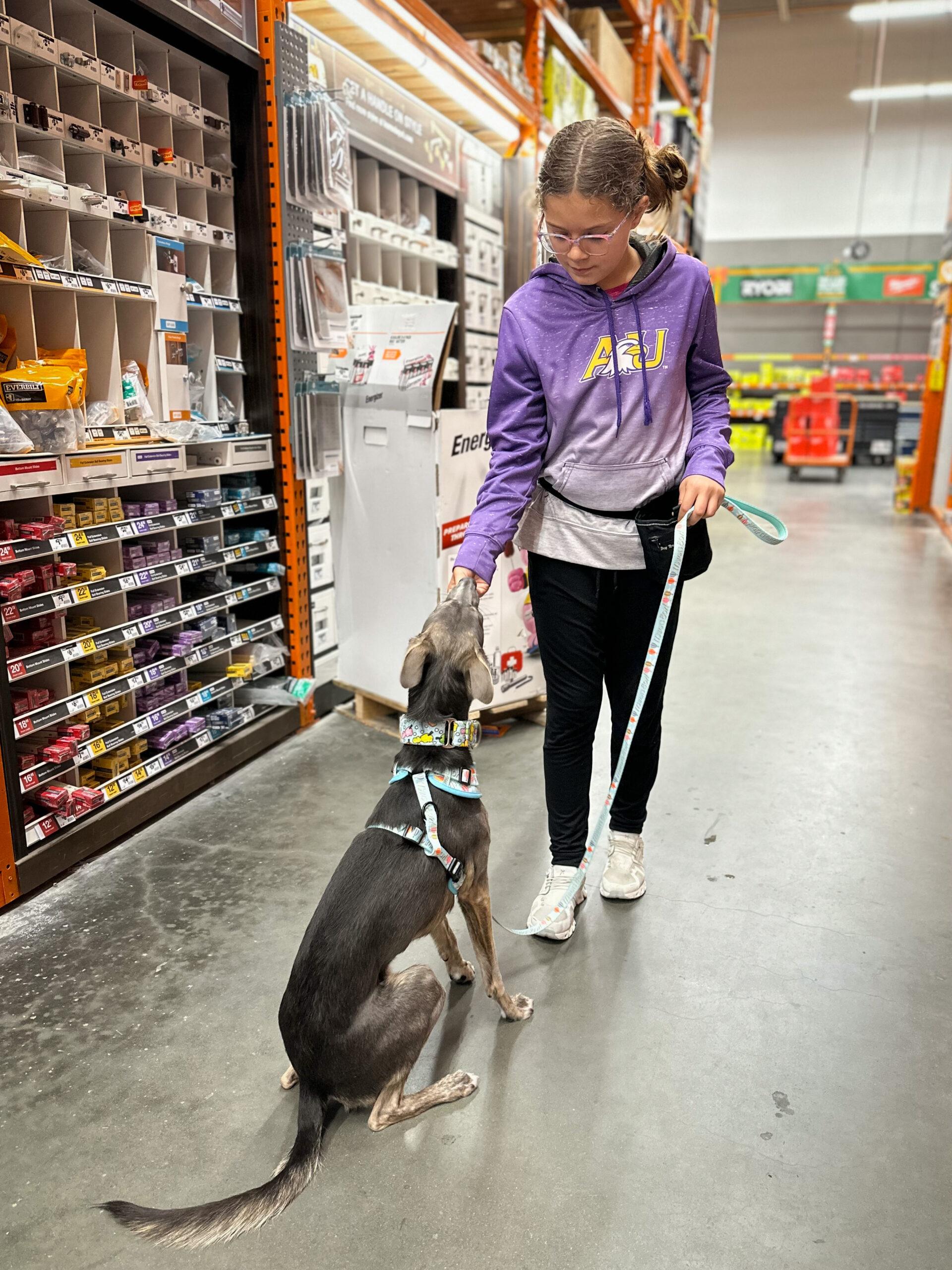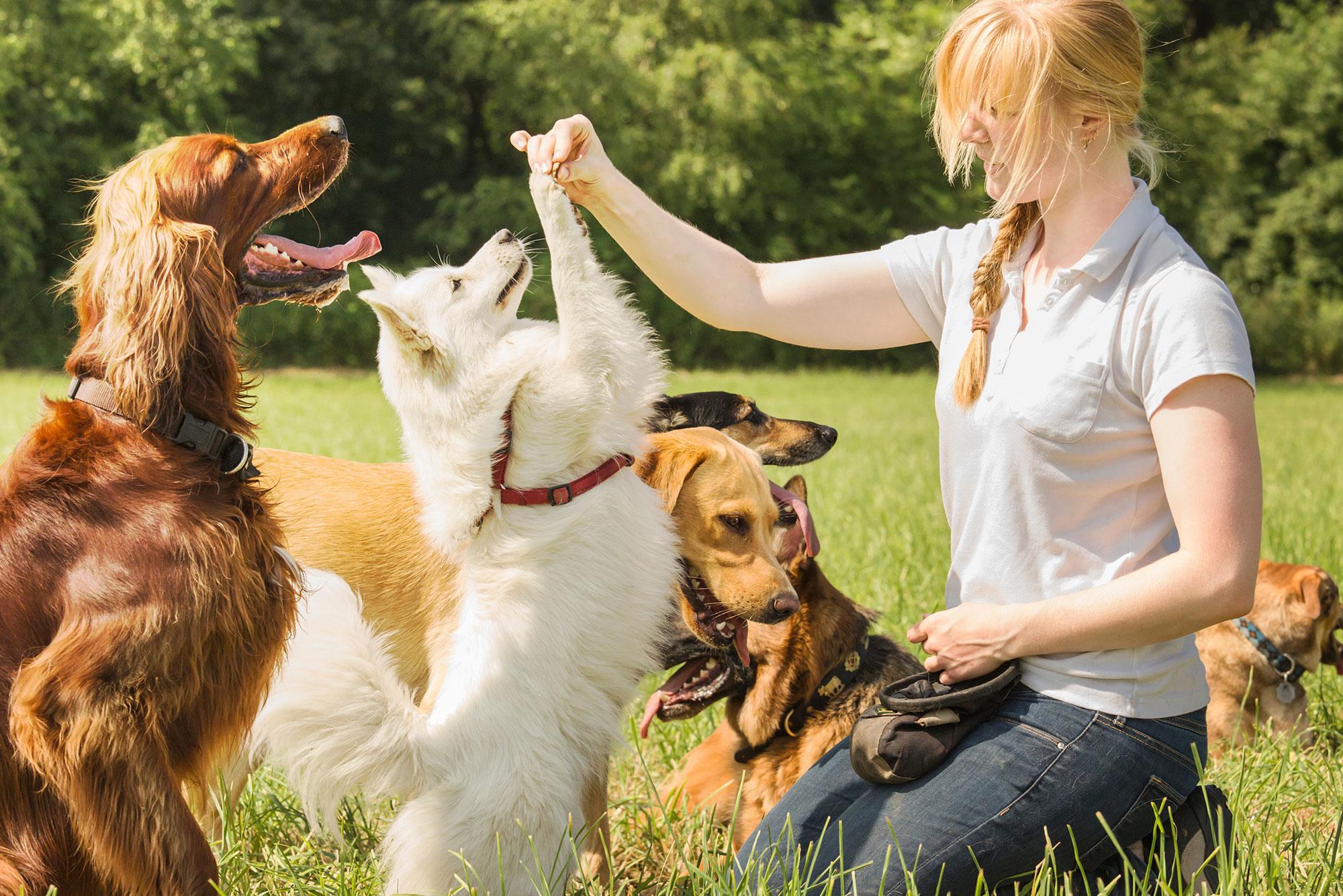Discover the Leading Blunders to Avoid in Dog Training
Discover the Leading Blunders to Avoid in Dog Training
Blog Article
Vital Tips for Successful Dog Training: A Guide for Animal Owners
Effective pet training is a diverse procedure that requires a strategic method tailored to both the family pet's personality and the owner's objectives. Trick parts such as establishing constant commands, using positive reinforcement, and promoting early socialization play important duties in fostering a well-adjusted canine companion. Numerous animal owners encounter challenges that can impede progression, leading to stress and unpredictability. Comprehending how to navigate these barriers can dramatically improve the training experience, ultimately changing the partnership between owner and pet dog. What are the vital methods that can be employed to guarantee success in this venture?
Comprehending Dog Behavior
Recognizing canine actions is vital for efficient training and cultivating an unified partnership between pooches and their owners. Pet dogs connect largely via body language, vocalizations, and activities, making it critical for owners to interpret these signals properly. Identifying a pet dog's pose, tail position, and ear orientation can supply insights right into its mood. For circumstances, a wagging tail does not constantly show happiness; it can additionally signal enjoyment or anxiousness.

Socialization plays a considerable duty in dog actions; direct exposure to various settings, individuals, and various other animals can substantially influence a dog's character. Additionally, variables such as breed characteristics and private character need to direct training techniques, as some types might have certain behavioral qualities that demand tailored techniques. By comprehending these aspects, owners can develop a helpful setting that urges positive actions, bring about effective training end results and a much deeper bond with their pet dogs.
Establishing Regular Commands
Efficient communication with your canine starts with developing constant commands. This fundamental element of training is important for promoting understanding in between you and your family pet. Uniformity in the commands you make use of makes sure that your dog can accurately link certain words or expressions with the wanted habits.
When selecting commands, pick clear, distinct words that are very easy to separate and claim from one an additional. Prevent utilizing similar-sounding commands that might puzzle your dog. Making use of "rest" and "remain" is appropriate, but "rest" and "struck" can lead to misunderstandings.
In addition, keep the exact same tone and quantity for each command. Pets are delicate to singing hints, so differing your tone can create complication.
It is equally important to make certain that all household participants get on the very same page pertaining to the commands made use of. A united front in command use will prevent combined signals and strengthen the discovering process.
Favorable Support Strategies
The power of positive reinforcement in dog training depends on its capability to urge preferred actions with incentives and praise. This strategy is grounded in the concept that behaviors complied with by desirable results are more probable to be duplicated. By incorporating positive support into your training program, you can properly shape your pet dog's habits in a useful manner.
To implement positive reinforcement, it's necessary to recognize what inspires your pet dog, whether it be treats, toys, or spoken appreciation. When your pet dog does a desired activity, such as resting on command, investigate this site right away compensate them with a reward or affection. This association in between the command and the favorable outcome enhances their understanding.
It's vital to timing the incentives properly; delivering the support within secs of the desired actions aids your pet dog make the link (dog training). Furthermore, consistency is crucial-- make sure that all member of the family use the exact same commands and incentive systems to stay clear of complication

Gradually, you can minimize the frequency of deals with as your pet discovers the actions, transitioning to applaud or periodic benefits. This technique not only cultivates a solid bond in between you and your dog yet also advertises a positive discovering atmosphere, making educating a delightful experience for both.
Socialization and Communication
Consistently revealing your dog to a range of environments, people, and other animals is vital for their social development. Socialization must begin early, ideally throughout the essential window of 3 to 14 weeks, when pups are most responsive to brand-new experiences. However, older pets can additionally profit from ongoing socialization efforts.
Present your dog to different setups, such as parks, pet-friendly shops, and city areas. This click here for more info exposure helps them adjust to different stimulations, reducing stress and anxiety and anxiety reactions. Motivate positive interactions with various other pets and people, guaranteeing that these encounters are regulated and safe to foster self-confidence.
Make use of structured playdates with genteel pets, as this can boost your dog's social abilities and instruct them proper actions. Obedience classes and training sessions likewise give exceptional chances for socialization, enabling your pet to communicate with others in a monitored atmosphere.
Display your pet dog's body movement throughout interactions, as this will help you assess their comfort level. Gradually raise exposure to more difficult scenarios while guaranteeing that each experience is favorable. A well-socialized dog is a lot more likely to exhibit well balanced habits, making them a happiness to have in any setting.
Resolving Usual Training Challenges
Every pet dog owner will come across training obstacles at some factor, regardless of their pet's age or socializing level. Recognizing typical concerns such as stubbornness, diversions, and fearfulness can assist in developing reliable strategies for improvement.

Slowly introduce diversions as the dog becomes more skillful in commands. Short, frequent training sessions are additionally effective in keeping attention.
Terror can hinder a dog's knowing process. Gradual desensitization to the resource of anxiety, coupled with favorable support, can assist ease stress and anxiety. Persistence is critical; never require a dog into a situation that causes distress, as this might worsen the problem.
Inevitably, understanding and addressing these usual obstacles with a structured approach will certainly foster a more productive training experience, reinforcing the bond in between canine and proprietor while promoting reliable learning.
Conclusion
In summary, effective pet dog training relies upon a detailed understanding of canine habits, the facility of consistent look here commands, and the application of positive reinforcement techniques. Socialization plays an essential duty in establishing well-adjusted pets, while resolving common training challenges needs perseverance and versatility. By executing these vital approaches, pet owners can foster a strong bond with their canines and promote desirable actions, inevitably bring about a harmonious relationship between humans and their canine friends.
Recognizing pet behavior is important for efficient training and cultivating an unified partnership between canines and their owners.Socializing plays a significant duty in pet dog behavior; exposure to numerous atmospheres, individuals, and other pets can considerably affect a dog's character.The power of favorable reinforcement in dog training lies in its ability to encourage preferred behaviors via benefits and praise. By integrating positive support right into your training program, you can efficiently form your dog's behavior in a useful manner.
In recap, effective pet training relies on an extensive understanding of canine actions, the establishment of consistent commands, and the application of favorable support strategies.
Report this page